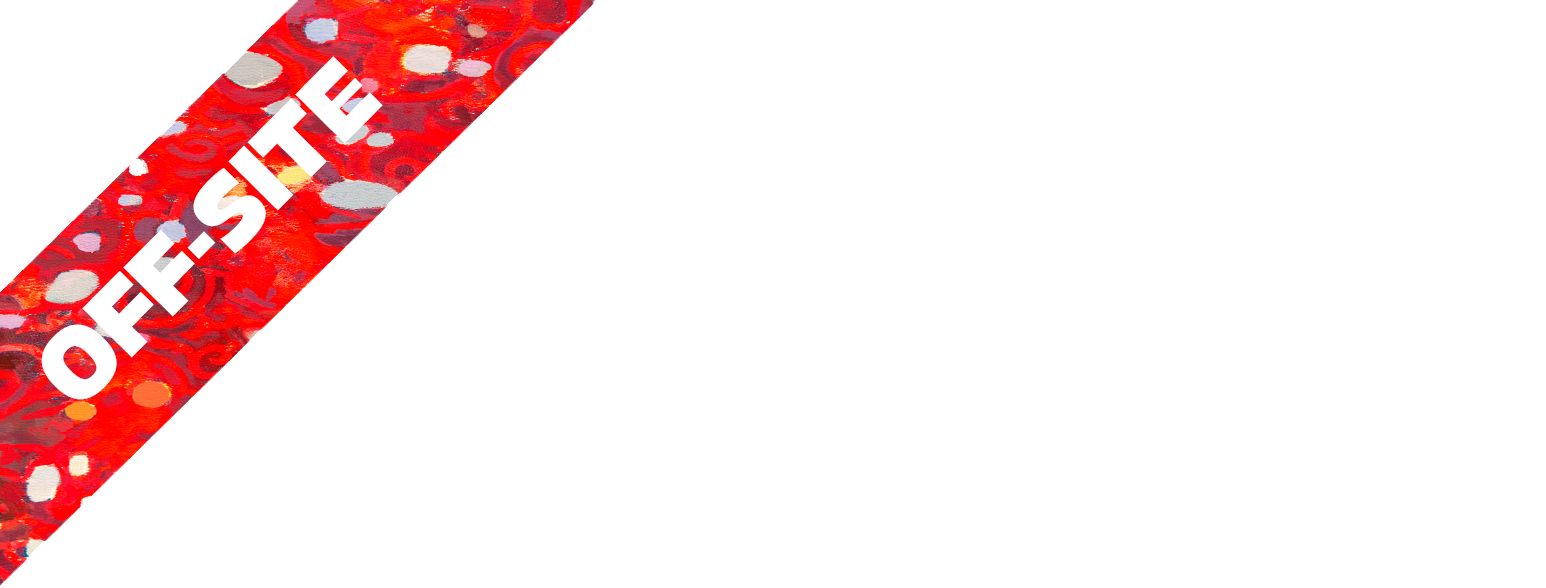|
18.01 - 15.02.2025 Pati Hill with Wolfgang Tillmans Maureen Paley x Air de Paris |
|
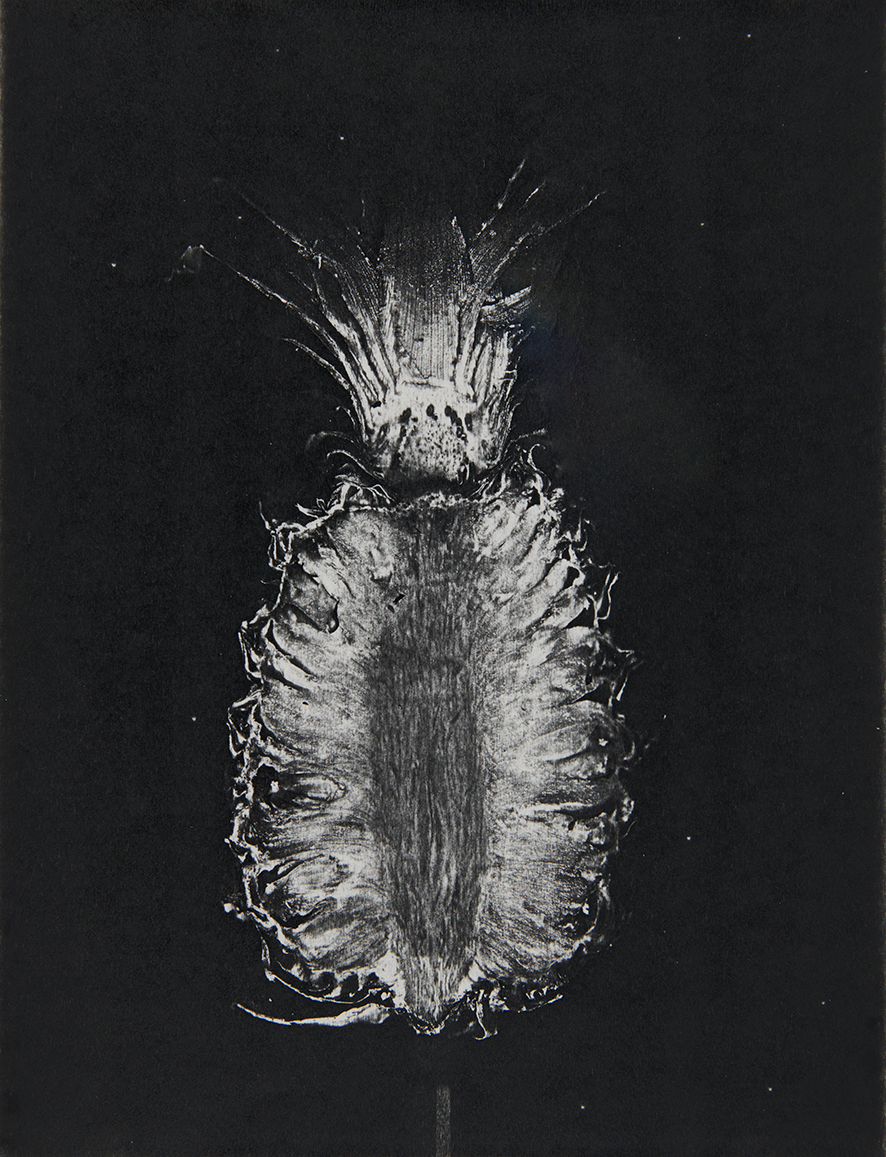
Pati Hill, Untitled (pineapple), c.1977-1979. Xerograph. 31 x 22,2 cm. Unique. Photo: Marc Domage. |
|
|
Les artistes Pati Hill et Wolfgang Tillmans ont exploré la capacité de duplication et d'abstraction de la photocopieuse et la manière dont l'appareil peut être à la fois le sujet d'une image et le facilitateur de sa production. Une sélection de xérographies uniques de Pati Hill, réalisées entre 1977 et 1990, est présentée aux côtés d'une seule impression à jet d'encre de Wolfgang Tillmans datant de 2011. loading…
Both Pati Hill and Wolfgang Tillmans have explored the photocopier’s capacity for duplication and abstraction and how the device can be both the subject of an image, and the facilitator of its production. A selection of Pati Hill’s unique xerographs made between 1977 and 1990 are presented alongside a single inkjet print by Wolfgang Tillmans from 2011.
Pati Hill was a multidisciplinary artist and writer who started to use the photocopier as an artistic tool to publish her first ‘copy works’ in the early 1970s. After the birth of her only child in 1962, Hill claimed to “quit writing in favour of housekeeping” and began a thirteen-year period that she later described on her resume with the words “Housewife, mother.” As she resumed her creative output, she proposed that the copier machine could unite writers and artists owing to its original function of reproducing text. By laying various objects on the scanner such as a pair of scissors, a telephone, or pieces of sliced fruit she aimed to translate invisible domestic labour into a visual language that simultaneously presented objects as images and as scanned still lifes. “The principles on which the copier works – yes / no, multiplicity, instantaneousness – are those that govern much of modern life, letting the copier impose rather than imposing on it may reveal something about our times and what is in store for us in the near future.” Pati Hill, Letters to Jill, A Catalogue and Some Notes on Copying, originally published 1979 by Komblee, re-printed by Mousse 2020. Accompanying this group of Hill’s copy works is a large unframed inkjet print by Wolfgang Tillmans who has a long-held fascination with the possibility of making new pictures and how the world is presented to us through images. The subject of CLC 800, dismantled, a, is a photocopier seen in the artist’s studio and no longer operational – its external parts laid around the machine’s core. Here, Tillmans uses the camera to analyse and record the complex inner workings of this image-making device. Tillmans had begun making works on a photocopier in 1987 by enlarging found images by up to four hundred percent. These experiments yielded Approaches (1987–88), a group of xerographic triptychs which were displayed at his first solo exhibition, held in 1988 at Café Gnosa, Hamburg. Throughout his career he has continually returned to the photocopier as a means of producing both moving and still images. “The exploration of the image surface, of the very nature of what constitutes an image, has always been of great fascination to me… I started being interested in photography through deconstructing or destroying photography.” Wolfgang Tillmans, in Nathan Kernan, What They Are: A Conversation with Wolfgang Tillmans, Art On Paper, May-Jun 2001. 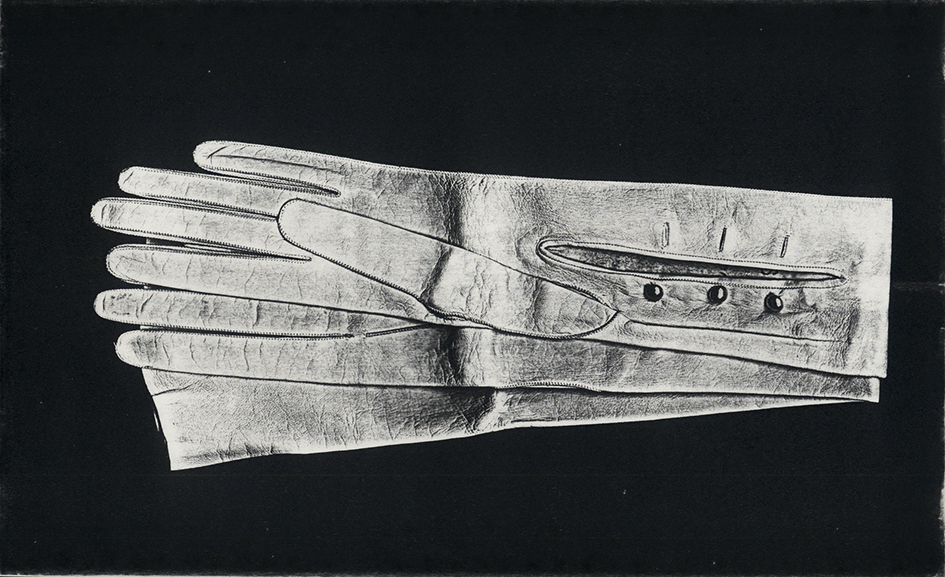
Untitled (white gloves), 1976. From the series "Garments". Xerograph. 21,6 x 35,3 cm. Unique. 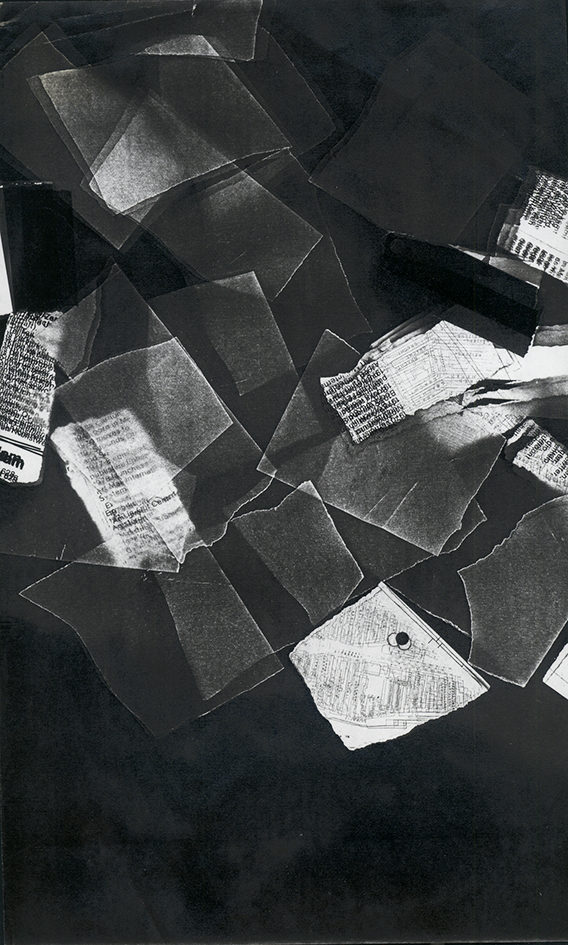
Untitled (paper scraps), 1976. Xerograph. 35,5 x 21,5 cm. Unique. 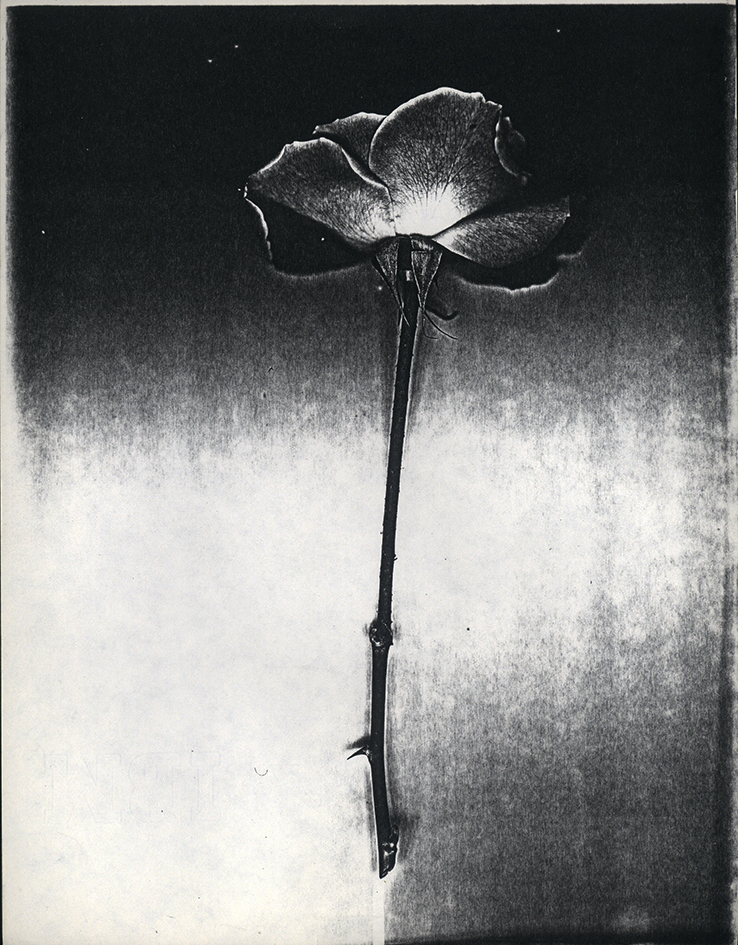
Untitled (rose), c.1977-1979. Xerograph. 29,3 x 22,8 cm. Unique. 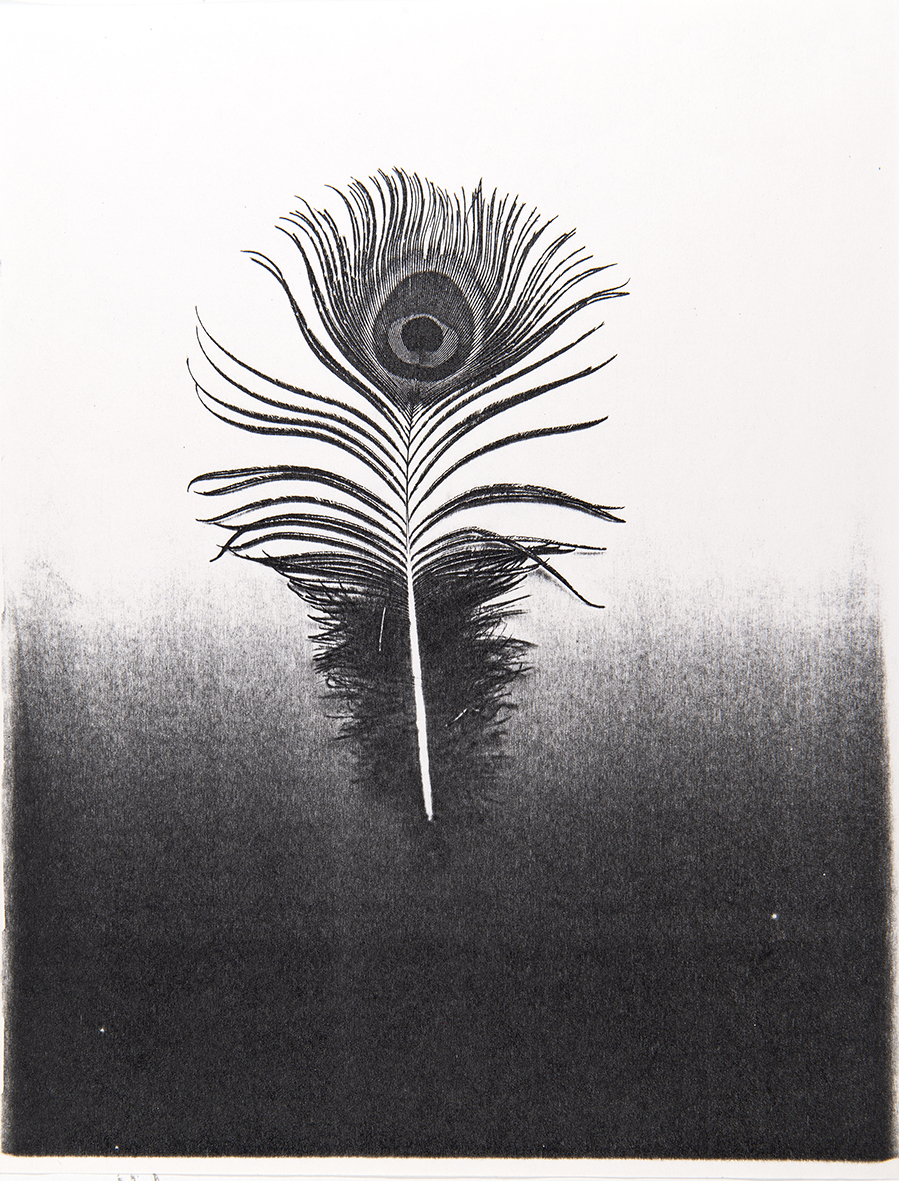
Untitled (peacock feather), c.1977-1979. Xerograph. 29,3 x 22,8 cm. Unique. 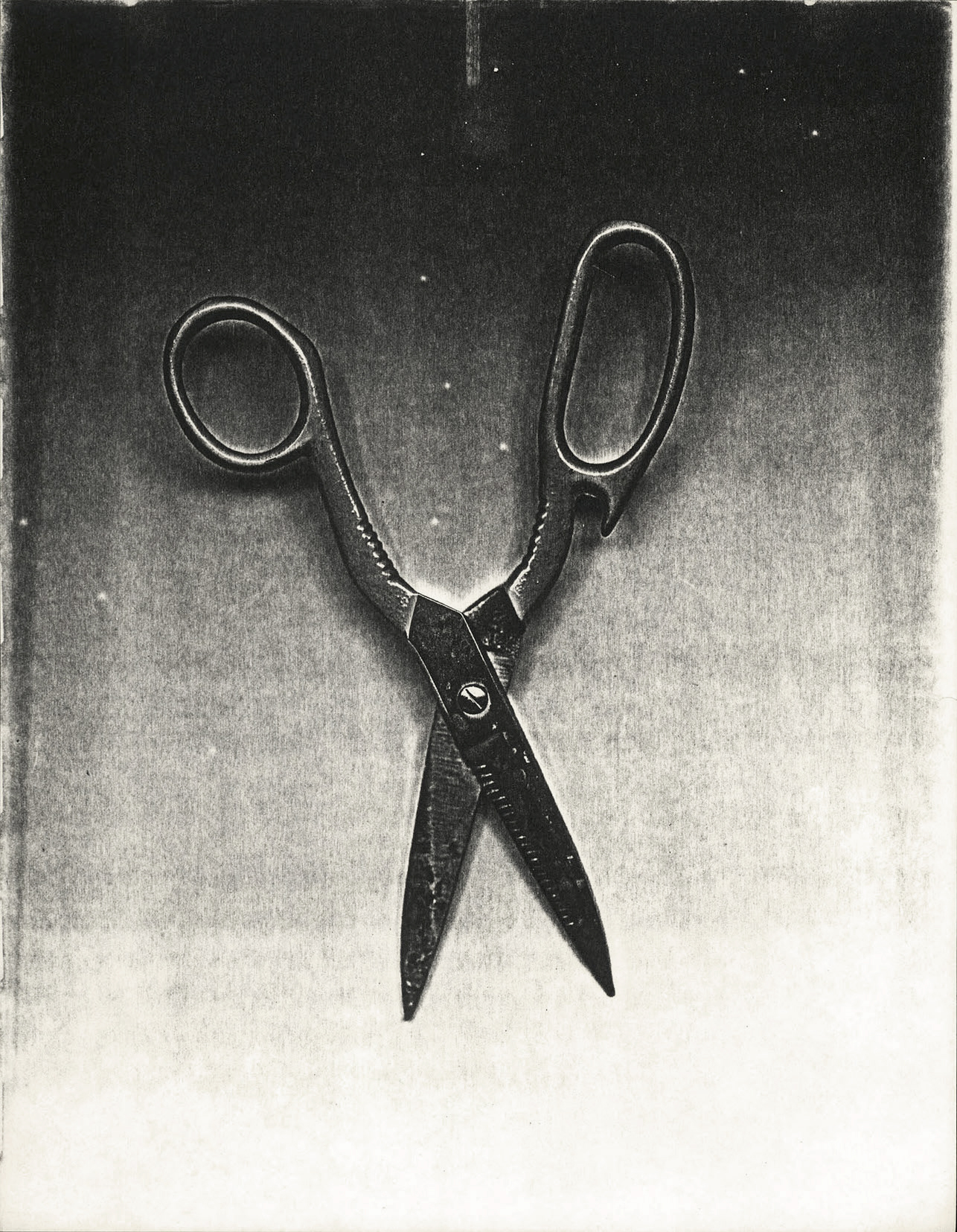
Untitled (scissors), c.1977-1979. Xerograph. 29,3 x 22,8 cm. Unique. 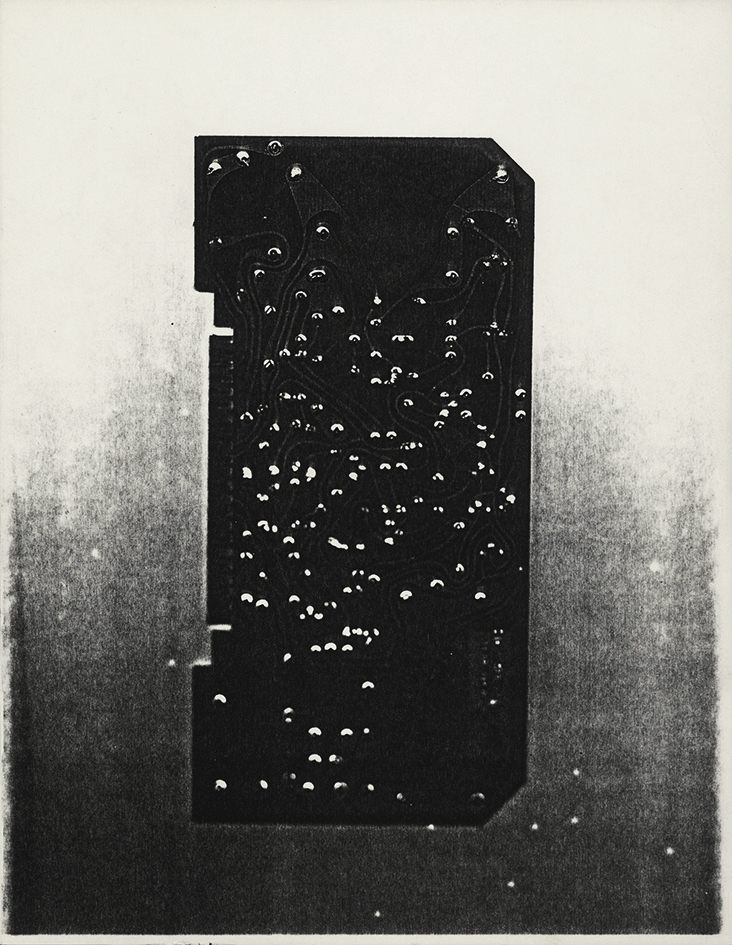
Untitled, c.1977-1979. From the series "Common objects". Xerograph. 29,3 x 22,8 cm. Unique. 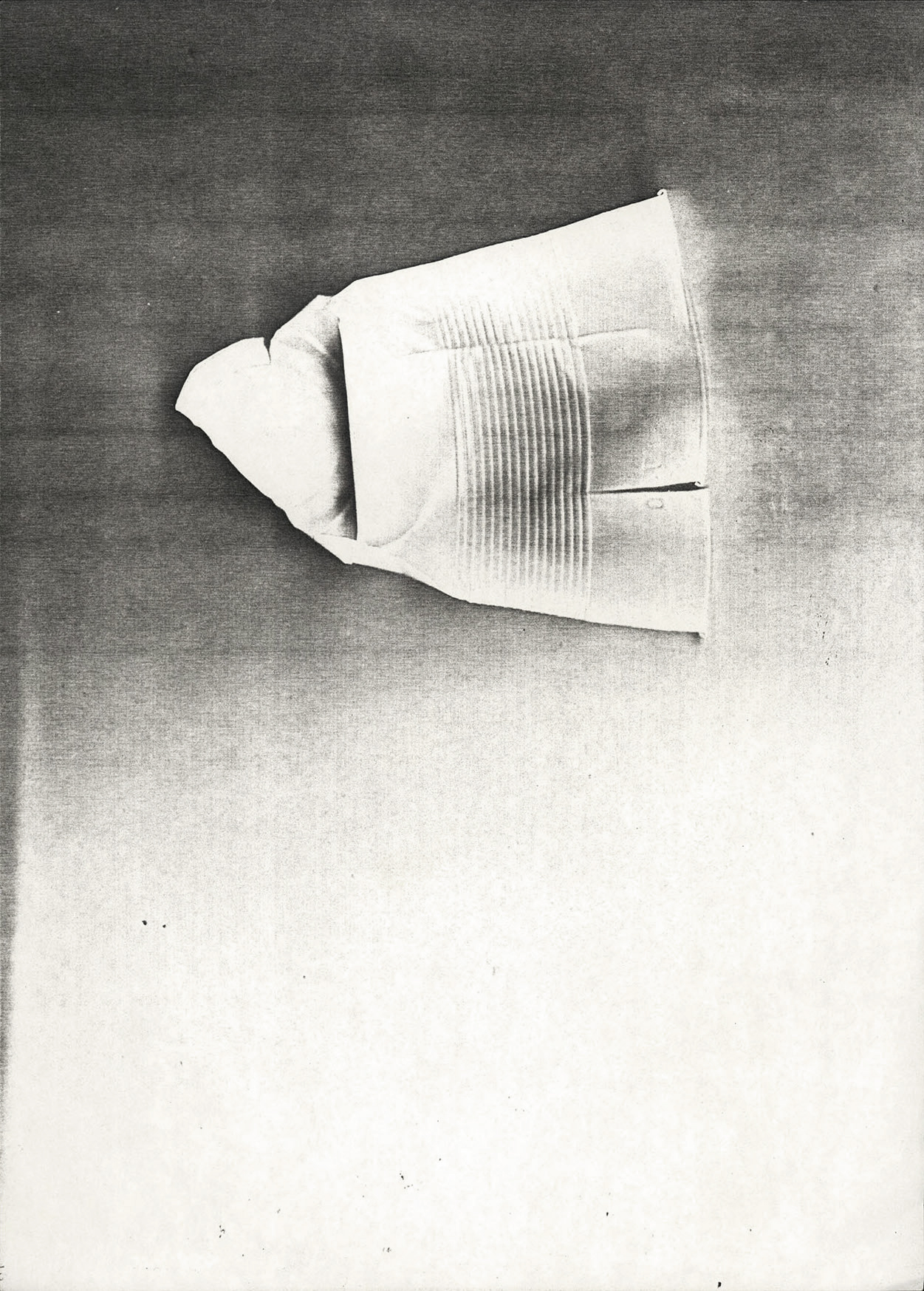
Untitled (plastic cup), c.1980. Xerograph. 29,7 x 21 cm. Unique. 
Untitled (flowers), c.1980. Xerograph. 29,7 x 21 cm. Unique. 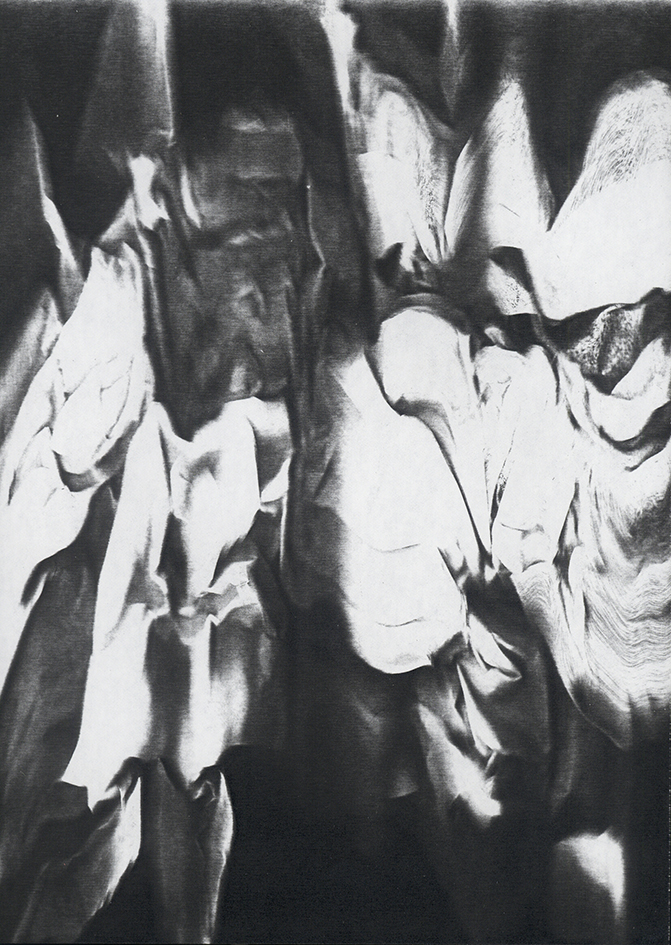
Untitled (scarf), 1983. Xerograph. 30,9 x 22,2 cm. Unique. 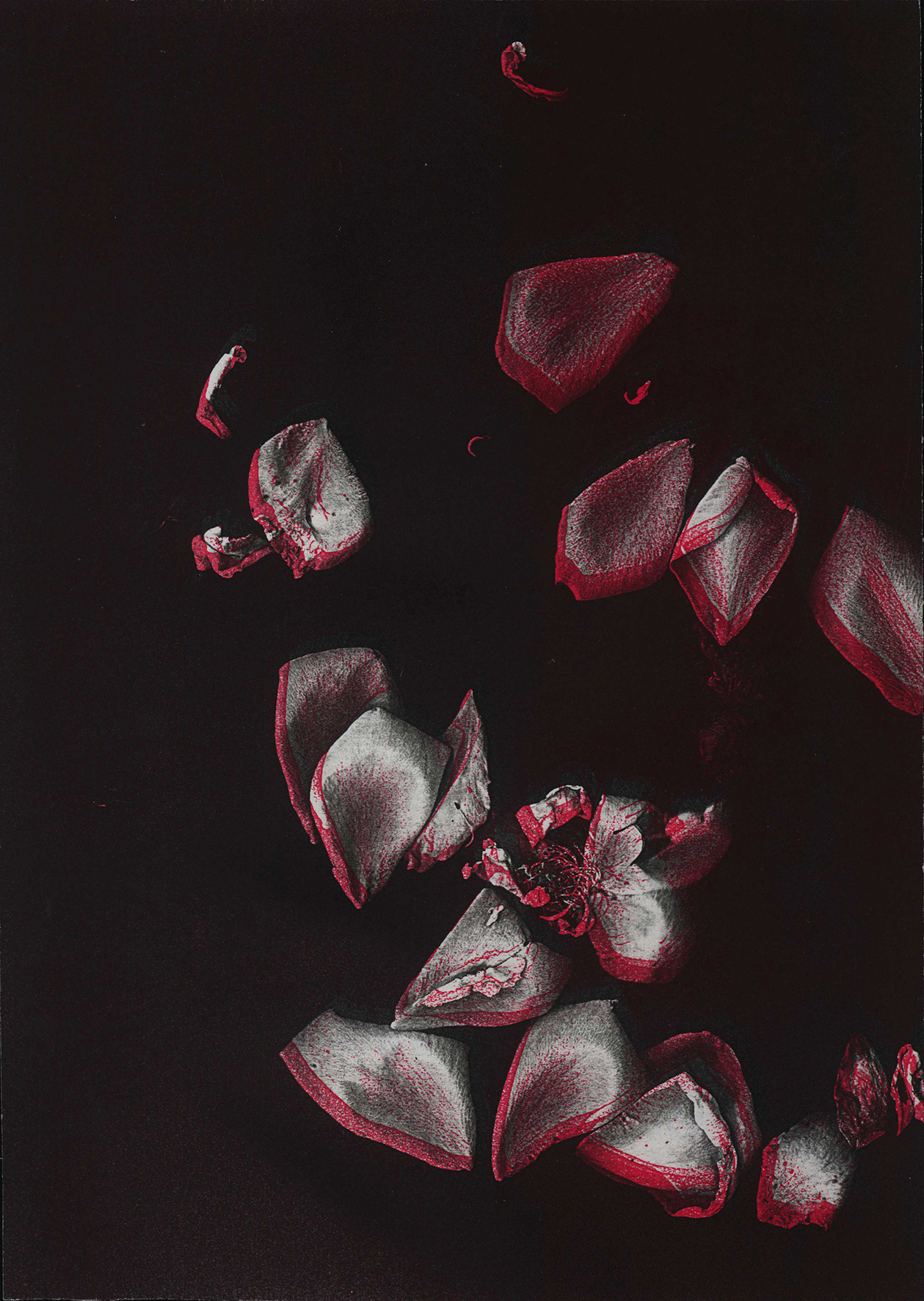
Untitled (red and white petals), c.1990. Xerograph with red toner. 30,9 x 22,2 cm. Unique. 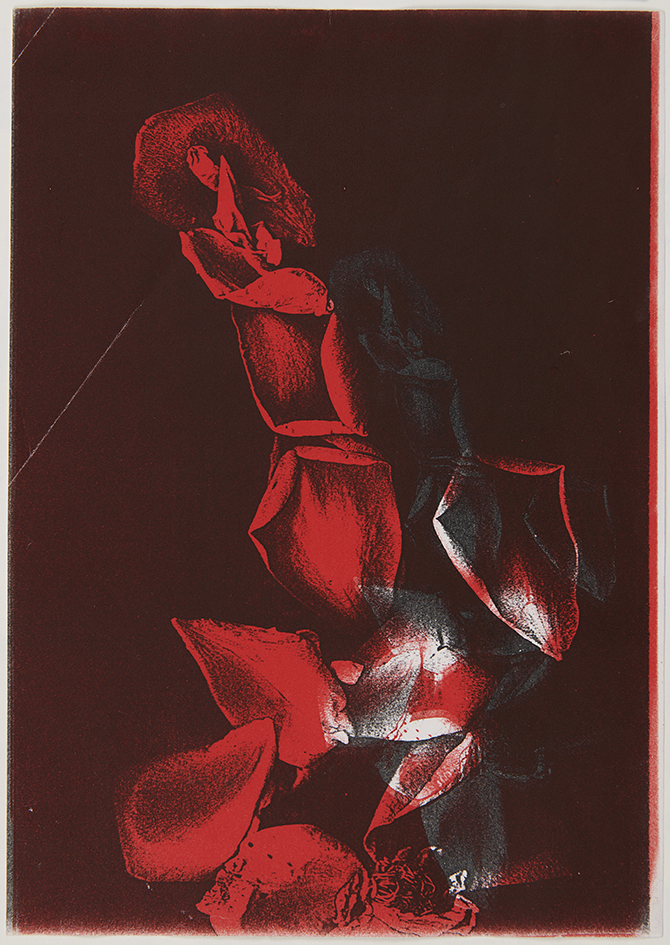
Untitled (red petals), c.1990. Xerograph with red toner. 29,7 x 21 cm. Unique. |
|
